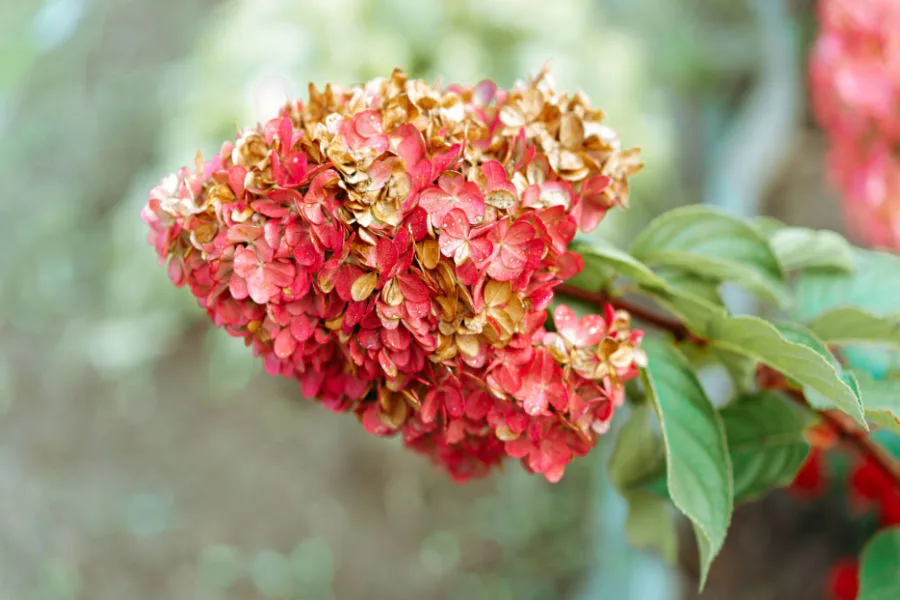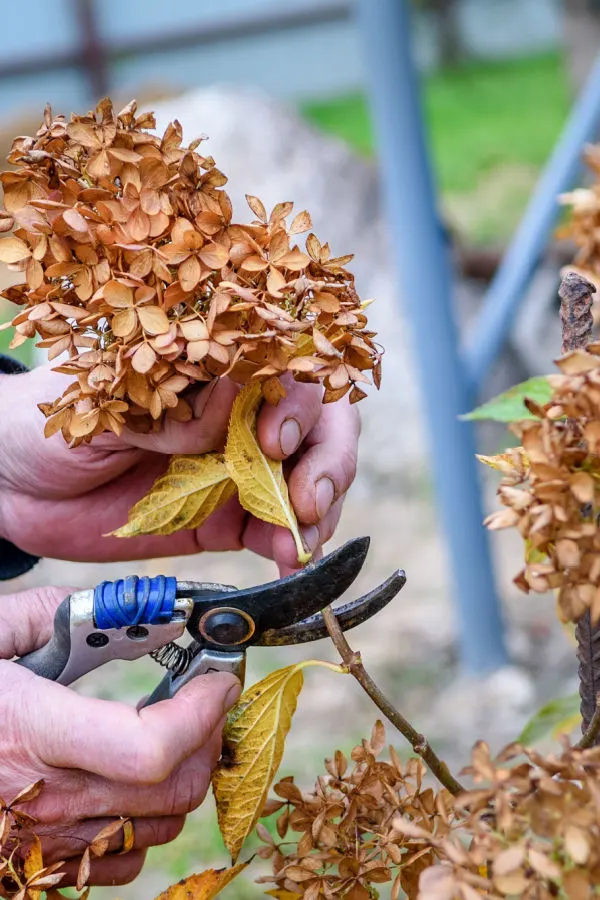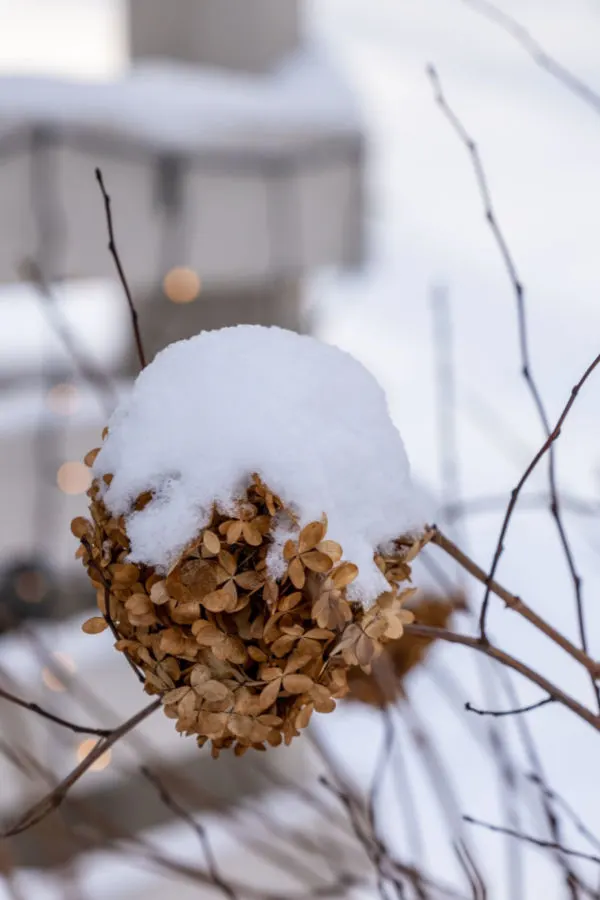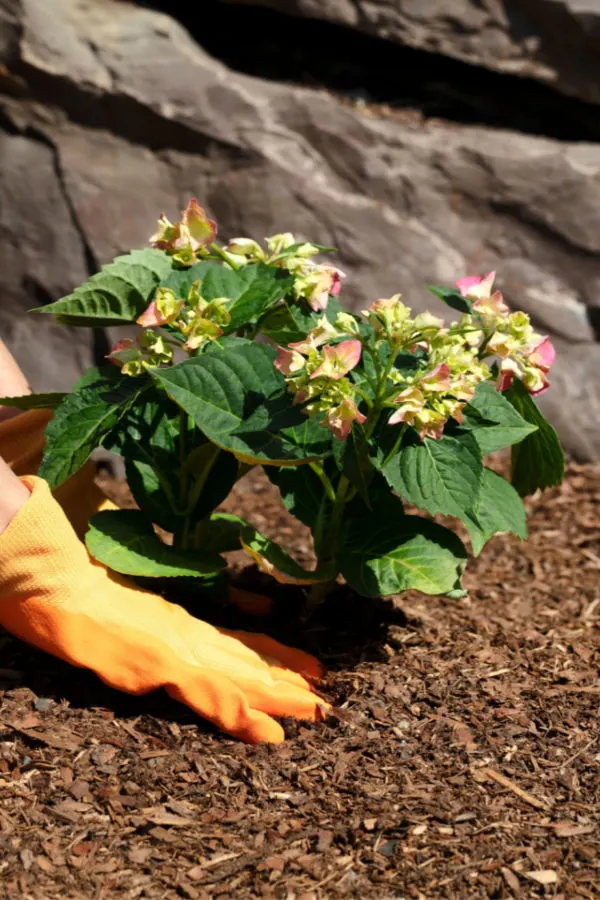How you care for your hydrangea bushes in late summer and fall can not only have a big impact on their overall health, but also on just how well they perform next year. And that includes whether they bloom big – or perhaps not at all!
As daylight begins to fade with each passing day in late summer, it’s time to start getting your hydrangea bushes ready before the snow and cold arrive. One thing is for sure, a little work now can pay off big next year.
Hydrangeas are one of the most beautiful of all perennial shrubs. But these wondrous plants are also one of the most often misunderstood when it comes to late summer and early fall care. Especially when it comes to the tasks of pruning, fertilizing and deadheading spent blooms.

Today’s article will cover and provide answers to all of those important questions and more. And hopefully, in the process, have you getting your hydrangea bushes successfully ready for winter – and for a better-than-ever bloom set next year!
Caring For Hydrangeas In Late Summer & Fall
Pruning Hydrangeas
One of the biggest mistakes many gardeners make with hydrangeas revolves around pruning. It is important to know that hydrangeas should not be heavily or even moderately pruned every single season. In fact, they can produce strong blooms for years without ever cutting them back at all.
Pruning for hydrangeas only needs to occur to keep it well shaped, or after many years of growth in order to keep it manageable. Light pruning for shaping is more than fine to do each season, but mass pruning is simply not necessary on an annual basis.
If you will be pruning, there are a few things to keep in mind before you begin cutting back. First and foremost, you will need to know what variety of hydrangea you are growing.
This will determine if your hydrangea needs fall pruning or mid-summer pruning. There are two separate varieties of hydrangeas. One blooms on old wood growth, while the other blooms on new growth.
When To Prune – How To Care For Hydrangeas In Late Summer & Fall
Varieties that grow on old wood growth bloom in summer. More importantly, summer blooming hydrangeas flower from blooms that formed on last year’s growth. Pruning for these varieties should take place in the summer, right after they finish blooming.

By pruning right after they bloom in the summer, they can grow new wood and bloom sets for next season. Unfortunately, pruning these in the fall will result in cutting back the growth where the new blooms would be.
On the other hand, fall blooming hydrangeas bloom from same season growth. These hydrangeas can be pruned back in the fall after the blooms die back. Next spring, they will then produce the new growth that next fall’s blooms will appear on.
Oakleaf, Bigleaf, Climbing and Mountain are all summer blooming types of hydrangeas and should be pruned in the summer after blooming. Smooth and Panicle varieties are fall bloomers and pruning can be done in late fall or very early spring.
If you are not sure which variety of hydrangea you are growing, you can simply base your pruning on when your bush blooms. Summer blooms = summer pruning. Fall blooms = late fall / early spring pruning.
Deadheading Blooms – How To Care For Hydrangeas In Late Summer & Fall
One type of “pruning” that can be done every year is deadheading spent blooms – especially before the cold of winter settles in.
Deadheading is the practice of removing spent blooms. During the blooming season, removing fading blooms can help new blooms to produce a more robust flower set. But as the season draws to an end, it is important to remove all of the blooms to help the bush better handle winter.

Many gardeners like to leave the last flush of blooms in place on their hydrangea bushes. The blooms really are a sight to see as a dried flower. And that beauty can give a lot of interest through the summer and fall for sure.
It is, however, a good practice before winter settles in to remove the old blooms. Not only will it help the plant conserve a bit of energy, it also helps protect it from heavy snow, ice or winter wind. These can all put pressure on the remaining wood, and often can cause snaps or breaks that damage the bush – and next year’s blooms!
Preparing Hydrangeas For Winter – Fall Hydrangea Care
Now that we have covered pruning, it is time to talk about winterizing your hydrangeas. How you winterize will depend on the climate of your specific location.
First, no matter where you live, all hydrangeas can benefit from one thing every fall – an energizing layer of compost! Applying a few inches of compost around the base of your plant not only helps insulate the roots for winter, but slowly adds nutrients that can be used for next year’s growth and blooms.
No matter if you live in a cold climate, or an area with more moderate winters, hydrangeas will also benefit from a fresh layer of mulch in the fall. Mulch not only insulates the roots of hydrangeas from sudden thaws and freezing, it also helps to retain moisture.
How Much Mulch Is Enough – How To Care For Hydrangeas In Late Summer & Fall
But how much mulch you apply will all depend on where you live. The general rule of thumb is the colder the climate, the more mulch you will need. In areas where the temperatures rarely if ever get below freezing, a few inches of mulch on top of the compost is more than enough to help retain moisture.

However, if you live in a colder climate with winters that have temperatures that drop to zero, a 6″ layer is more than adequate. And, if your climate gets even colder, an 8 to 12″ layer covering around the main base is best for winter protection.
When applying the heavier layers in cooler climates, take back the mulch as spring arrives. This will allow the plant to resume it’s growth with ease.
Fertilizing – How To Care For Hydrangeas In Late Summer & Fall
One thing you do not want to do in the fall is apply any additional fertilizers. The layer of compost is more than adequate to give the bush a little nutrition before winter. But applying any more power can actually create late season growth that will be vulnerable to winter damage.
For summer and late summer/fall blooming hydrangea varieties, fertilizing is best done in the early spring. Use a balanced fertilizer and apply in the early spring just before or as the plant is leafing out. Product Link : Jobes Shrub & Tree Fertilizing Spikes
Here is to taking care of your hydrangeas this fall, and to bigger and better blooms next year! For more information on hydrangea care, see our article How To Plant, Grow And Care For Hydrangeas.
